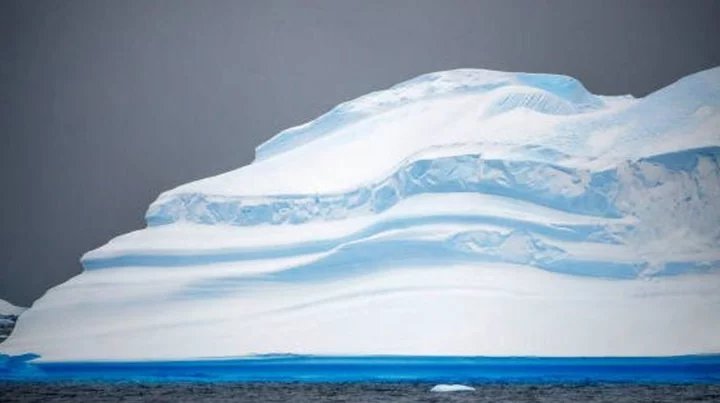
US health insurers Humana, Cigna in talks to merge -source
By Anirban Sen and Deena Beasley (Reuters) -U.S. health insurer Cigna is in talks to merge with peer Humana, a
1970-01-01 08:00

Pep Guardiola vs Ange Postecoglou: Complete head-to-head record
The complete head-to-head record record between managers Pep Guardiola vs Ange Postecoglou.
1970-01-01 08:00

New UAW Unionizing Drive Targets 13 Carmakers Including Tesla and Toyota
The United Auto Workers union is launching simultaneous, public organizing campaigns at more than a dozen automakers including
1970-01-01 08:00

11 Fierce Facts About Wolverines
These animals are elusive, and much about them remains mysterious—but here are a few things we do know.
1970-01-01 08:00

Disturbing cache of elongated human skulls discovered in flooded Mexican sinkhole
When archaeologists explored an underwater cavern in southern Mexico in 2014, they were shocked by what they found. The cavern is known as Sac Uayum, and is located in Mexico’s Yucatán peninsula. It is technically a cenote – a natural pit that comes about after limestone bedrock collapses, exposing groundwater beneath. Local villagers were said to be terrified of the spot, because pits like this were sometimes used by the ancient Maya for sacrificial offerings. Archaeologist Bradley Russell, from College of St Rose, and a group of divers scaled down roughly 20 metres into the unknown. Inside the pit were two chambers with human bones and skulls scattered across the floors of each. The skulls were elongated, as part of an ancient practice that is thought to have involved flattening people’s heads during infancy. Archaeologists still don’t know why the ancient culture did this – but it ain't pretty. The cenote sits just outside the ruins of the ancient Maya city of Mayapán, and the researchers think this shows that, like the modern day locals, the ancient Mayans kept their distance too. Local legend says that Sac Uayum is guarded by a feathered, horse-headed serpent. Older residents of the nearby village of Telchaquillo tell stories of people seeing the serpent perching in a tree, leaping up, spinning around three times, and diving into the water. Russell explained to National Geographic that the sinkhole is said to be “evil”. “To this day, people do not get drinking water from that cenote, it is generally considered taboo. “It’s off-limits, people do not let their children plan near there and there’s a lot of beliefs around this cenote having evil forces or malevolent forces associated with it. “Cenotes are important because the main access to the water that you get is through these sinkholes. “They are also believed to be access to the Mayan underworld and the homes of Gods. “Mayapan is a large city, it’s incredibly dense, there’s nothing like it in the classic period, it’s incredibly dense for Maya history, there’s nothing quite like it.” He added that the location of Sac Uayum – south of Mayapan – is a clue as to what was going on. In Maya beliefs, south is the direction associated with the underworld. Alternatively, Russell also suggested they could have been plague victims. "You wouldn't want them near the rest of the population. And you wouldn't want to drink the water either.” How to join the indy100's free WhatsApp channel Sign up to our free indy100 weekly newsletter Have your say in our news democracy. Click the upvote icon at the top of the page to help raise this article through the indy100 rankings.
1970-01-01 08:00

Social media CEOs to testify at US Senate hearing in January
WASHINGTON The chief executives of social media companies Meta, X, TikTok, Snap and Discord will testify on online
1970-01-01 08:00

Water discovered leaking from Earth's crust into the planet's core
There is much we still don’t know about the inside of our planet – but scientists recently discovered water is slowly leaking down there from the surface. It’s not a simple journey. The liquid is dripping down descending tectonic plates, before eventually reaching the core after a 2,900 kilometre journey. And while the process is slow, it has over billions of years formed a new surface between the molten metal of the outer core and the outer mantle of the Earth. In a new study, scientists at Arizona State University have said the water is triggering a chemical reaction, creating the new layer, which is “few hundred kilometres thick”. (That’s “thin” when it comes to the inner layers of the Earth.) “For years, it has been believed that material exchange between Earth's core and mantle is small. Yet, our recent high-pressure experiments reveal a different story. “We found that when water reaches the core-mantle boundary, it reacts with silicon in the core, forming silica," co-author Dr Dan Shim wrote. “This discovery, along with our previous observation of diamonds forming from water reacting with carbon in iron liquid under extreme pressure, points to a far more dynamic core-mantle interaction, suggesting substantial material exchange.” So what does it mean for all of us up on the surface? The ASU release said: “This finding advances our understanding of Earth's internal processes, suggesting a more extensive global water cycle than previously recognised. “The altered ‘film’ of the core has profound implications for the geochemical cycles that connect the surface-water cycle with the deep metallic core.” How to join the indy100's free WhatsApp channel Sign up to our free indy100 weekly newsletter Have your say in our news democracy. Click the upvote icon at the top of the page to help raise this article through the indy100 rankings.
1970-01-01 08:00

Cigna, Humana Are Discussing Cash and Stock Merger, WSJ Says
Cigna Group and Humana Inc. are in talks to merge in a cash and stock deal that would
1970-01-01 08:00

4 Big Misconceptions About the Human Body
Considering how familiar we all are with the human body—since we all have one—there is a surprising number of enduring myths about it.
1970-01-01 08:00

MLB Rumors: Juan Soto trade talks heat up as surprise team enters the chat
San Diego Padres outfielder Juan Soto is available for trade, per those in the know. However, could he remain in the NL West with the San Francisco Giants?
1970-01-01 08:00

Digital bank robberies key risk for central bank e-money, BIS report warns
By Marc Jones LONDON Digital bank robberies and other cyber hacks will be a key risk for countries
1970-01-01 08:00

One trillion tonne iceberg escapes from Antartica and is gaining speed
The world’s biggest iceberg is drifting away from the Antarctic after having been grounded there for more than 30 years. The iceberg, which has the catchy name A23a, split from the Antarctic’s giant Filchner Ice Shelf in 1986, but has been stuck to the ocean floor since shortly after that time. Now, according to the British Antarctic Survey, it is on the move. Satellite images show the iceberg drifting past the northern tip of the Antarctic Peninsula. A23a is truly massive. It weighs nearly a trillion metric tonnes and is about three times the size of New York City. It is more than twice the size of Greater London. Scientists say the massive chunk of ice is drifting at a rate of three miles each day. “Over time, it’s probably just thinned slightly and got that little bit of extra buoyancy that’s allowed it to lift off the ocean floor and get pushed by ocean currents,” said Oliver Marsh, a glaciologist at the British Antarctic Survey. Andrew Fleming, a remote sensing expert from the British Antarctic Survey, told the BBC the iceberg had been drifting for the last year, but now appeared to be picking up speed. “I asked a couple of colleagues about this, wondering if there was any possible change in shelf water temperatures that might have provoked it, but the consensus is the time had just come,” he said. Still, some scientists are concerned about how the movement could affect wildlife. The iceberg could end up at the island of South Georgia, which is about 1,000 miles east of the southern tip of South America, which is home to seals, penguins and other seabirds. Chad Greene, a glaciologist at NASA’s Jet Propulsion Laboratory, told the New Scientist large icebergs tend to break off from Antarctica around once per decade. They then get stuck in the Antarctic’s nearly freezing waters, which staves off the melting process, but only for a while. “Icebergs this big can hang around for decades in one place, then one day decide to go for a jolly,” Greene said. “That’s when things get interesting.” How to join the indy100's free WhatsApp channel Sign up to our free indy100 weekly newsletter Have your say in our news democracy. Click the upvote icon at the top of the page to help raise this article through the indy100 rankings.
1970-01-01 08:00
